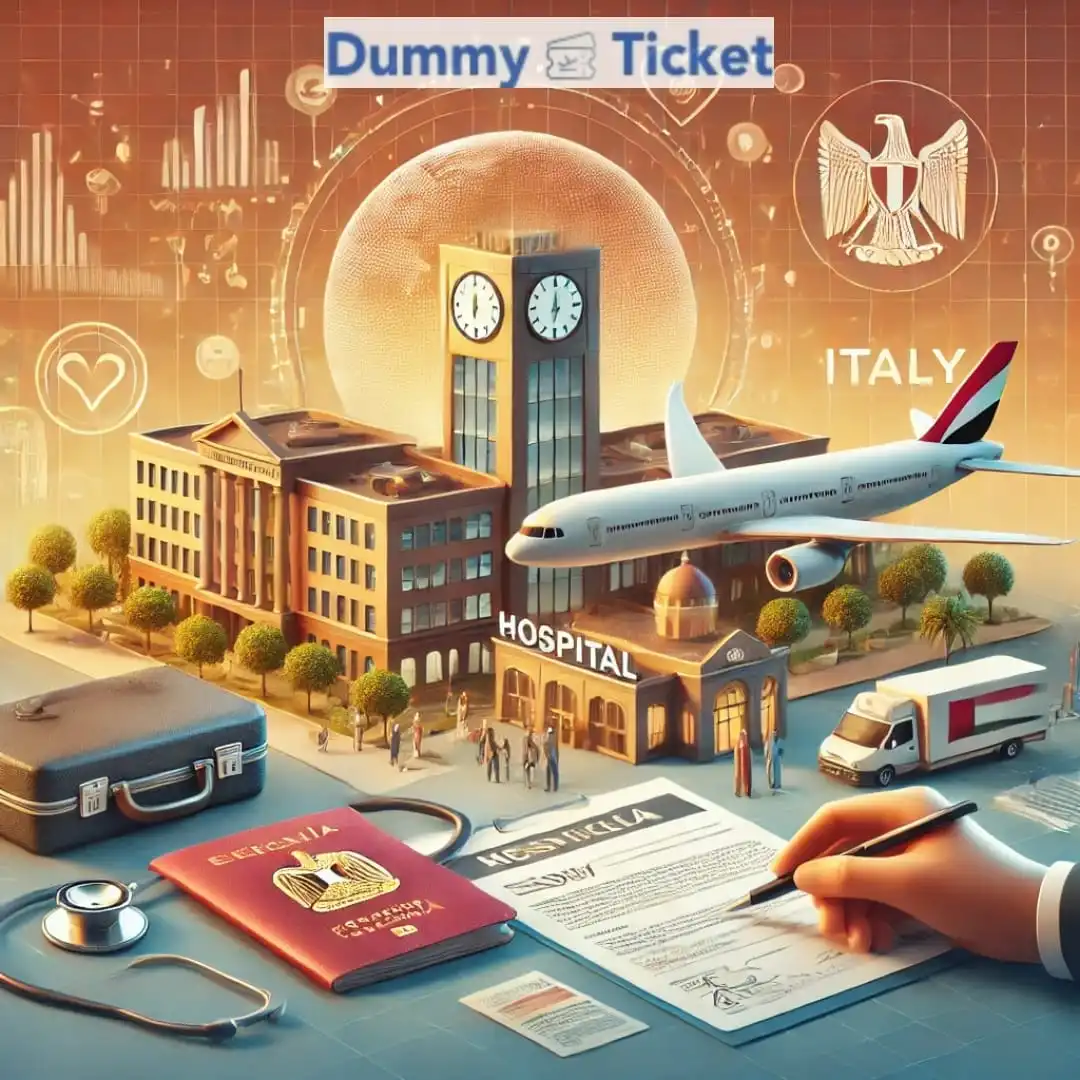India, a land rich in history, diverse cultures, and breathtaking landscapes, is an ideal destination for tourism, study, business, and even long-term residence. However, before embarking on your journey to this remarkable country, obtaining the appropriate Indian visa is crucial. Understanding the visa requirements and application process can help you avoid potential obstacles during your travels.
In this article, we present an in-depth guide on the types of Indian visas, how to apply, their specific requirements, essential travel tips, and must-visit destinations in India.
Types of Indian Visas
India offers a variety of visas catering to different needs. Below are the details for each type:
- Tourist Visa
- Purpose: For exploring India's heritage sites and natural wonders.
- Duration:
Short-term visa (30 days).
Multiple-entry visas valid for 1 year or 5 years. - Usage Restrictions: Not valid for business, education, or employment purposes.
- Electronic Visa (e-Visa)
- Purpose: Covers tourism, medical treatment, or minor business activities.
- Features: Fully online application process.
Quick processing (3–5 days).
Available for citizens of over 150 countries. - Duration:
Up to 60 days for tourism.
Based on purpose for medical or business use.
- Business Visa
- Purpose: Participation in meetings, trade fairs, or business collaborations.
- Duration: Usually valid for 6 months to 1 year with renewal options.
- Requirements: Invitation from an Indian company or trade entity.
Proof of parent company registration.
- Medical Visa
- Purpose: Travel for medical treatment at Indian hospitals or clinics.
- Duration: Up to 6 months, extendable in some cases.
- Requirements: Official letter from the Indian hospital.
Medical reports from your home country. - Additional Benefit: Companion visas for family members.
- Employment Visa
- Purpose: For working in an Indian company or institution.
- Duration: One year, renewable based on the employment contract.
- Requirements: Invitation letter from the employer.
Proof of qualifications and experience.
- Student Visa
- Purpose: Studying at Indian universities or institutes.
- Duration: Covers the full duration of the program.
- Requirements: Acceptance letter from the institution.
Proof of financial capability.
- Research Visa
- Purpose: Conducting academic or scientific research in India.
- Requirements: Acceptance from a research institution.
Research plan and funding proof.
Residence Visa Purpose: Permanent residency for individuals with long-term familial or professional ties to India.
General Documents Required for Indian Visa
- Passport valid for at least six months.
- Two recent passport-sized photos with a white background.
- Completed visa application form.
- Round-trip Dummy flight Ticket.
- Hotel bookings or an invitation letter from a host.
- Bank statement showing financial stability.
- Additional documents depending on the visa type.
Tips for Traveling to India
- Vaccinations: Ensure necessary vaccinations, such as Yellow Fever, if traveling from an endemic region.
- Currency: The Indian Rupee (INR) is the official currency. Carry some cash along with credit cards.
- Safety: Be cautious in crowded areas and avoid unfamiliar places at night.
- Language: English is widely spoken, but learning a few basic Hindi phrases can be helpful.
- Water: Always drink bottled water to prevent illness.
Tips for Traveling to India
- Taj Mahal (Agra): An iconic symbol of love and one of the New Seven Wonders of the World.
- Jaipur (Rajasthan): Known as the "Pink City," it boasts the Amber Fort and Hawa Mahal.
- Kerala: Often called "God’s Own Country," famous for its serene backwaters and lush greenery.
- Varanasi: A spiritual city attracting visitors worldwide.
- Ladakh: A haven for adventure enthusiasts in the Himalayas.
- Goa: Renowned for its pristine beaches and vibrant nightlife.
Travel from Egypt to India: A Comprehensive Guide
India is among the top destinations for Egyptians, whether for tourism, education, healthcare, or business. With its unique cultural heritage, natural beauty, and affordable living costs, India has become a preferred choice for many. Below are the key details for Egyptian travelers:
Travel Requirements from Egypt to India
- Obtaining an Indian Visa
For Egyptians, obtaining an Indian visa is a mandatory step for traveling to India. The types of visas available include:
- Tourist Visa: For sightseeing and exploring.
- Medical Visa: For undergoing medical treatments.
- Student Visa: For those accepted into Indian universities.
- Business Visa: For attending business meetings or events.
- Required Documents for Egyptian Travelers
To apply for an Indian visa, the following documents are necessary:
- A valid passport with at least six months of validity.
- Two recent passport-sized photographs with a white background.
- A completed visa application form (available online or at the embassy).
- Proof of return flight bookings.
- Hotel reservations or an invitation letter from a host in India.
- A bank statement to confirm financial ability to cover travel expenses.
- Invitation letters for business or medical purposes, if applicable.
- Visa Application Process
Egyptians can apply through two main methods:
- Online Application for e-Visa
For short visits, the e-Visa process is quick and convenient. Applications are submitted through the official e-Visa portal. - Embassy Submission
For long-term visas, applicants need to visit the Indian Embassy in Cairo with the necessary documents and pay the required fees.
The Relationship Between Dummy Flight Ticket and Indian Visa
When applying for an Indian visa from Egypt or any other country, one of the essential requirements that may be asked of applicants is to provide proof of travel arrangements, such as booking a round-trip flight ticket. This is where Dummy ticket come in, as a practical and safe solution to meet this requirement without having to purchase an actual flight ticket in advance.
The Importance of Dummy Flight ticket for Indian Visa:
1. Compliance with Indian Embassy Requirements:
When applying for an Dummy Flight Ticket and Indian visa, proof of travel plans is typically required, including a round-trip flight booking.
A Dummy flight ticket shows the embassy that you plan to return to your country after your trip, enhancing your chances of visa approval.
2. Avoiding Financial Losses:
Purchasing actual flight tickets before visa approval can be costly and risky, especially if the visa is denied for any reason.
By using a Dummy flight ticket, you can submit the required document without paying the full ticket price.
3. Demonstrating the Seriousness of Travel:
A Dummy flight ticket shows that you are serious about your trip and have planned ahead, leaving a positive impression on the embassy.
4. Flexibility in Changing Plans:
If travel plans change after obtaining the visa (such as changing the date or destination), the temporary booking can easily be canceled, and a new flight can be booked without losses.
How to Get a Temporary Flight Booking for Indian Visa:
Contact Travel Agencies or Booking Agents:
Many travel agencies offer Dummy flight ticket services for a nominal fee.
The agent will book a temporary ticket that is valid for just a few days, giving you enough time to apply for the visa.
What to Consider When Using Dummy Flight Ticket for Indian Visa:
- Ensuring Booking Accuracy:
The booking must be real and verifiable. Embassies may contact the airline to confirm the validity of the booking. - Matching Booking Details with Visa Application:
Ensure that your name, travel destination, and flight dates on the temporary booking match exactly with the information on the visa application. - Booking Duration:
Most temporary bookings are valid for 48 to 72 hours, so plan to submit your visa application within this time frame. - Difference Between Dummy Flight Ticket and Refundable Tickets:
A Dummy Flight Ticket does not require full payment, while a refundable ticket requires full payment but offers the possibility of a refund if canceled.
When is a Dummy Flight Ticket Not Enough?
In some cases, the embassy may request:
A Fully Paid Ticket: In special cases such as applying for a long-term visa or a business visa.
Travel Itinerary: A document that provides more detailed information about your travel plans, such as departure and return dates and accommodation details.
Can You Apply for an Indian Visa Without a Dummy Flight Ticket?
Sometimes, if you are visiting India for an official invitation (such as a conference or medical treatment), the embassy may accept an invitation letter as an alternative to a Dummy Ticket. However, submitting a Dummy Flight Ticket enhances your application and increases the likelihood of approval.
A Dummy Flight Ticket is an essential and effective tool to meet the Indian visa requirements without risking the purchase of an actual Dummy Ticket before approval. This option provides flexibility and cost savings, and it’s a professional step that shows the embassy you are serious about your trip and committed to your plans. Always make sure to submit reliable and organized documents for a successful and smooth application experience.
In conclusion, the Indian visa is your gateway to exploring a land full of rich culture, traditions, and breathtaking landscapes. Whether you're traveling for tourism, business, or education, obtaining a visa has become more convenient with the new electronic procedures. Always make sure to stay updated and check the visa requirements before traveling to avoid any delays. India awaits you with unforgettable experiences and vibrant colors that will stay with you forever. Get ready for an amazing journey to the heart of South Asia, where ancient civilization meets modern innovation! 🇮🇳



